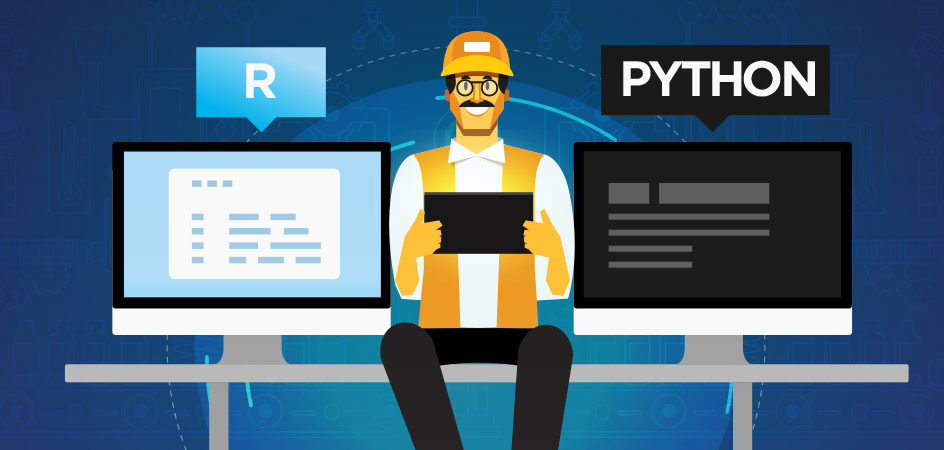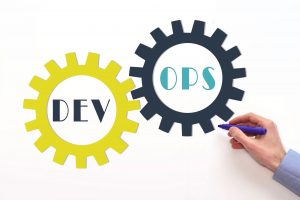
R vs Python: Which Programming Language is Best for Big Data?
Posted by Walid Abou-Halloun Date: Oct 1, 2020 2:45:39 AM
If you want to work in Big Data, there are no two ways around it: you need to know programming languages in
order to perform complex data analysis.
Whether you’re an employer or a would-be employee, programming languages are among the
essential data analytics skills you need to succeed.
The question is, between R vs Python, which is most beneficial to use? We’re here to help you answer that
question. Keep reading to find out more.
What is R?
R is a
hugely popular programming language if the 95,000+
members of LinkedIn’s R Group are any indication.
So
what is R?
R is an open source scripting language designed for prescriptive analytics and data visualisation. It’s also
a procedural language which works by breaking down a programming task into a series of steps, subroutines,
and procedures.
It also has command-line scripting build for storing complex data-analyses which can be reused on similar
data sets.
History
R was built by statisticians, for statisticians, and most programmers can spot that fact pretty much as soon
as they look at a line of R syntax.
The initial version of R was released in 1995. The name was derived from the first letter of the names of its
two developers, Ross Ihaka and Robert Gentleman.
Ihaka and Gentleman specifically designed R as a language for academic statisticians with advanced
programming skills. With R, these statisticians could perform complex data analysis and display that
information in an array of visual formats.
Pros
Because R was designed for statisticians to complete complex analysis, it’s a fantastic tool for
Big Data analysts.
For one thing,
R’s package ecosystem is a major help. Put it this way: if there’s a
statistical technique you want to use on your data set, chances are, there’s an R package for that.
And if there’s not, R is an open source language and a free software, so any developer can build the tool
they need.
Plus, R has a strong potential for machine learning thanks to its data analysis and data generation
capabilities are stellar. And since R has strong links to academia, any new research in the field probably
has an R package involved, which keeps R firmly at the cutting edge.
Cons
Of course, like any programming language, R isn’t perfect.
For one thing, the syntax was designed for high-level statisticians and mathematicians. So if you’re looking
for a quick language, R will take some time to get used to.
Since the language was developed in the 60s, R was designed on the principle that very large data sets have
to be stored as physical memory. This has become less of an issue as modern computers have gained memory in
leaps and bounds, but it still slows down R’s processing power.
In addition, certain capabilities (like security) weren’t built into the original framework of the language.
This meant that R had functionally no security over the Web, which ruled it out if you wanted to do any
back-end server calculations.
This problem has been lessened by newer developments in the field, however.
What is Python?
If R is a language for those who can recite advanced statistical principles in their sleep, Python is the
inverse.
This might be why Python has seen
astronomic growth and has become one of the
most in-demand languages in the industry, used by major
players like Instagram, YouTube, and Spotify.
Python is an object-oriented programming language, grouping data, and code into objects that can interact
with, and modify, each other.
History
Python was conceptualised in the 1980s by
Guido van Rossum.
Unlike R, which is designed with complexity from the get-go, Python strongly emphasises readability and
efficiency above all.
This means that Python is a general-use programming language that’s highly accessible and easy to
learn.
It’s also named for Monty Python’s Flying Circus if that gives you any indication of van Rossum’s sense of
humor.
Pros
Like R, Python is a free, open-source language that anyone can download and use.
Since Python strongly emphasises readability, you’ll be hard-pressed to find a language that cleans up your
data quite as prettily as Python. It lets you add new functions and layers as you go, helping you to
separate and clean your data as you go.
Another big benefit of Python is its massive libraries. There are libraries for machine learning, data
collection, data manipulation, and data munging (to name a few).
But unlike R, you won’t run into integration problems. In fact, many programmers wrap lower-level languages
in Python for easier integration.
Cons
Python is a relatively simple programming language. Unfortunately, this is both a blessing and a curse.
Think of it this way: Python is far simpler than, say, JavaScript. If you learned Python first, it can be
much more difficult to transfer your knowledge of Python’s libraries and syntax to another programming
language.
In addition, because Python is a general-use language, it offers more options beyond statistical analysis.
Again, this is both a blessing and a curse.
Because it doesn’t focus solely on statistical analysis, it includes less statistical model packages than an
exclusive language like R.
R vs Python: What’s the Difference?
With that in mind, let’s take a closer look at the difference between R and Python, breaking it down into the
stages of the data pipeline.
Data Collection
You can get any kind of data with Python you could possibly want. If you can’t figure it out, Google Python
and the dataset you’re looking for. We promise you’ll find a solution.
Because of this, Python supports all kinds of data formats, whether you want to import an SQL table or source
JSON. It also allows you to create your own datasets with relative ease.
Almost any data you can grab from the web is something Python can simplify into a line of code.
R isn’t quite as versatile as Python, but it can certainly handle data from commonly used sources like Excel,
CSV, and text files.
In fact, many modern R packages have been designed to address this data issue, so while it might take you a
few packages to get there, you can find a way to use R for your dataset.
Data Exploration
When it comes to data exploration, it’s all about Pandas, Python’s
data analysis library.
Pandas is organised into data frames. These data frames can be defined and redefined throughout the project
and can be cleaned by filling in non-valid values with a value that makes sense for numerical analysis (like
0).
This makes it very easy to scan and clean in Python as you work.
Then, there’s R. As we said, R was built by statisticians for statisticians, so you’ll have quite a few
options to do complex analysis on large datasets.
Basic R functionality will cover you for things like:
- Basic analytics
- Optimisation
- Random number generation
- Signal processing
- Statistical processing
- Machine learning
Without ever leaving R for third-party libraries, you’ll be able to apply statistical tests and build
probability distributions.
So, if you want variety in your data exploration, R has a clear advantage.
Data Modeling
As for data modeling, both programs offer you a few options.
In Python, you’ll have to use a combination of libraries, such as:
- Numpy for numerical modeling analysis
- SciPy for computing and calculation
- The scikit-learn library for machine learning algorithms
Thankfully, all of these libraries have a pretty intuitive interface, like all things Python.
For data modeling in R, you may need to rely on packages outside the language’s core functionality. It mostly
depends on what you’re trying to do. You’ll mostly run into this problem with certain types of modeling
analyses, like mixtures of probability laws.
What Programming Language Should You Use?
With that in mind, which programming language should you use for Big Data?
That depends on what you’re trying to accomplish and what matters most to you along the way.
First, you should ask whether you intend to use the analysis in academia or industry. If you’re looking for
industry analyses, R certainly won’t hurt you, but more companies will be looking for Python.
You also need to consider whether you’re interested in machine learning or statistical learning. There’s an
important difference: machine learning is the offspring of artificial intelligence, while statistical
learning comes from statistics.
Their emphasis is also slightly different. Machine learning focuses more on predictive accuracy in
large-scale applications, while statistical learning emphasises the interpretability and precision of
models.
R was designed as a statistical language, which means it’s better suited to statistical learning. Python is
the better option for machine learning, as it’s far more flexible (particularly if you have any intention of
incorporating your analysis with web applications).
Need to Make Sense of Big Data?
The choice of R vs Python isn’t a simple one. Then again, neither is Big Data. But you still need it in order
to stay one step ahead of the competition.
If you need help
mastering your Big Data, we’re here to help you find the
skilled employees you need. Ready to get started?
Get in touch today to see how we can help.





